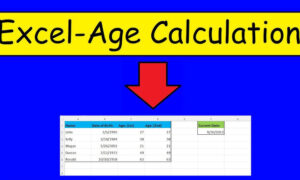The injuries or harm caused by another person’s negligence can affect the victim’s life, relationship with loved ones, and work. Sometimes, the damage may have a lifetime effect on the victim. However, no matter the severity of the harm, every victim must receive fair compensation.
“It is expensive to file a lawsuit despite the uncertainty of getting a fair settlement in court. Hence, settling a personal injury case without a formal court complaint is advisable,” says attorney Rich Godshall of Ostroff Godshall Injury and Accident Lawyers.
But do you know how to get a fair deal for your loss and damages? You need a reputable personal injury lawyer to guide and enlighten you on evaluating your loss and negotiating with the at-fault motorist’s insurer.
Steps to Calculate a Personal Injury Settlement
You must examine the economic and non-economic damages to determine a fair settlement.
Economic Damages
You can quickly and accurately calculate economic damages as they entail the costs you incurred to recover from the harm. You need bills and receipts to determine the economic damages. The damages include medical expenses (medicine, therapy, and physician’s charges), lost earnings due to incapacitation, and the cost of replacing damaged property.
Economic damages can also cover future expenses directly associated with the accident. Examples include loss of likely earnings due to permanent disabilities or impairment and additional medical care needs.
Non-Economic Damages
It is somewhat tricky to calculate non-economic damages because they are based on intangible factors and the level of the victim’s suffering due to the injury sustained. Negligence may negatively affect the victim through trauma and anxiety. The at-fault motorist’s insurer must also repay the adverse effects.
Legal professionals adopt the per diem or multiplier methods to calculate the compensation for non-economic damages. Let us briefly explain the two methods:
Per Diem Method:
Multiplier Method: This method entails the total economic damages multiplied by any figure from one to five. The severity of the harm will dictate the multiplier the insurer will use. They will use a higher multiplier for a grievous injury.
Factors Affecting the Settlement Value
At-fault parties’ insurers are known for always attempting to lower settlement amounts. However, the factors below can also affect your settlement value:
The Severity of the Injury:
Some injuries have a lifetime effect on their victims. For instance, a vehicular collision can cause someone a permanent disability. If the individual cannot return to work, the third-party insurance must pay for their potential wage loss. Hence, it will increase their settlement value.
Shared Responsibility:
Sometimes, the victims may share the blame for the injuries. In this case, the shared responsibility will reduce the settlement amount.
Insurance Policy Limits:
In instances where the guilty party’s insurance coverage is insufficient, the victim should consider filing a lawsuit rather than accepting an unjust amount.
When to Accept a Settlement Value
Finalizing the process with the at-fault motorist’s insurers may take several months. You need a reputable and passionate lawyer to help you throughout the negotiation process to get a fair deal.
However, some victims walk the process without an attorney. If you want to take this path, only consent to a settlement value after recovery. By then, you would have understood the full extent of the injuries and what is at stake.
You may also tell your physician to give you medical clearance to ensure you will not need any treatment again. You must also ensure that the offer can cater to all your lost wages and medical bills, including traveling expenses.



































